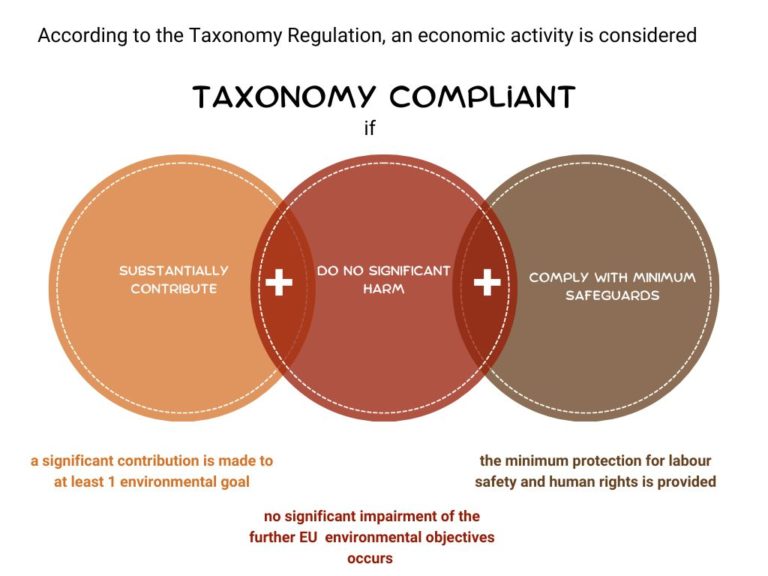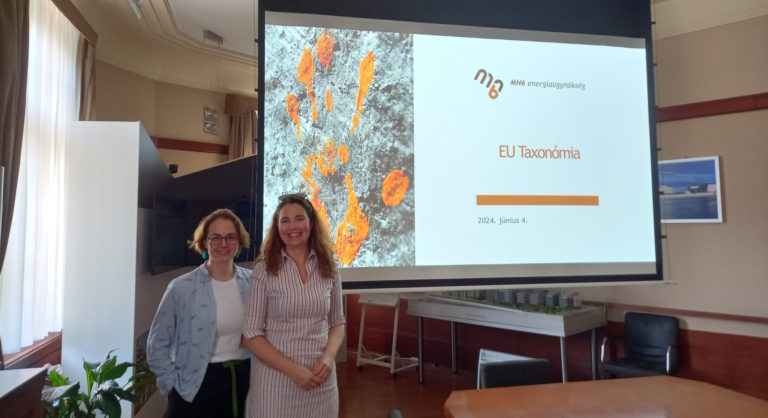To achieve the EU’s 2050 climate neutrality targets, the EU has created a Green Deal Action Plan, which includes a Sustainable Finance Action Plan. As part of this, the EU Taxonomy (Regulation 2020/852) came into force on 12th July 2020.
The aim of the taxonomy is to steer future investments into sustainable economic activities and thus make an important contribution on the way to climate neutrality in 2050. At the same time, the taxonomy poses reporting challenges for companies, as the implementation effort was underestimated for a long time.
The taxonomy does not represent a commitment to sustainable investments or economic activities, but primarily serves to identify “green” activities. Exactly which activities contribute to the restructuring of the economy and thus count as “green” is determined by the six climate and environmental targets defined by the EU:
climate change mitigation
adaptation to climate change
sustainable use and protection of aquatic and marine resources
transition to a circular economy
pollution prevention and reduction
protecting and restoring biodiversity and ecosystems
Along the lines of the above objectives, green activities can be identified that contribute significantly to the transition to a sustainable economy.

In principle, all companies covered by the Non-Financial Reporting Directive (NFRD)) are required to disclose information on the conformity of their business activities with the EU taxonomy. Accordingly, the EU taxonomy currently affects those capital market-oriented companies that have already been required to publish non-financial disclosures, the new Corporate Sustainability Reporting Directive (CSRD) has been published, whereby the circle of companies subject to reporting requirements and thus affected by the EU taxonomy is successively expanding considerably.
The following deadlines are currently foreseen for implementation by companies:
Basically, the regulation provides for the disclosure of the share of “green” sales revenues, capital expenditures (CapEx) and operating expenditures (OpEx) in terms of the taxonomy for each individual taxonomy-capable or -compliant economic activity and for each of the environmental targets. Using these metrics, the taxonomy is intended to provide a basis for investment decisions and to increase the informative value of reporting, for example, by outlining what percentage of a company’s revenue comes from sustainable economic activities.
On 31 August 2021, the Hungarian National Bank (MNB) announced the Green Capital Relief Scheme for companies and municipalities, and extended its conditions in March 2022. This introduced a green financing incentive into the lending mechanism of commercial banks.
In practice, this means that lending for certain “green” activities can benefit from a so-called “capital relief” if the appropriate requirements are met. In case of real estate, for example, the discount can be 5% or 7% (to encourage credit institutions to finance more green projects, as they can substantially reduce their capital requirements, which the MNB expects to ensure the stability of the banking system.)
The MNB has identified three possible ways in which individual properties can qualify for the discount:
according to the EU Taxonomy, which is based on the EU Taxonomy Climate Delegated Act for new construction, acquivisition and ownership and refurbishment of real estates, the available discount: 7%
according to the “Hungarian specific” taxonomy, which is a version tailored to domestic industry practices and specificities the available discount 5%
Buildings with green certification (BREEAM, LEED, DGNB, etc.) 5% discount is available.
In relation to compliance under points 1 and 2, the MN6 Energy Agency team supports interested companies with consultancy and EU Taxonomy eligibility assessment services in the following real estate related activities:
Our experience so far is that the most effective way to understand the taxonomy framework and green activities is an on-site workshops with the management. This includes:

1075 Budapest
Madách Imre út 8. III. em 4.
+36 30 620 5389